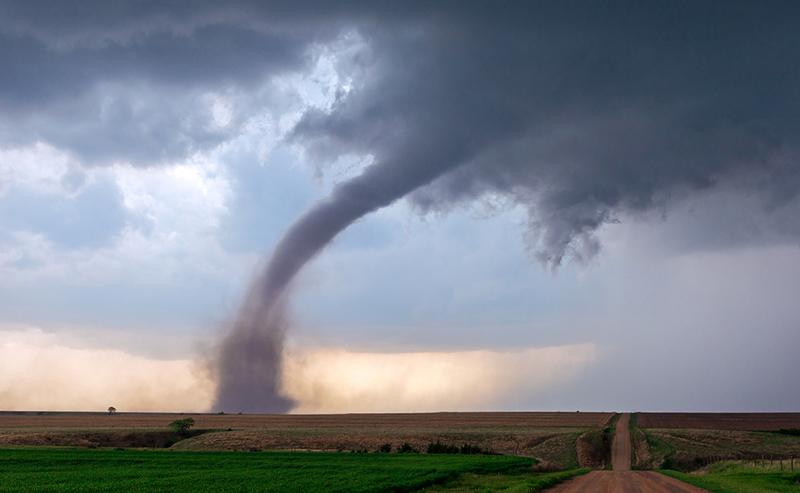April showers may bring May flowers but sometimes, unfortunately, they bring a whole lot more—hail, flooding rain, high wind, and yes, even tornadoes. In fact, according to the National Oceanic and Atmospheric Administration (NOAA) and its Storm Prediction Center, April, May, and June are typically the most active and dangerous months of the year for tornadoes in the United States. May typically tops the list with an average of 272 twisters annually. Even worse, these tornadoes often rank in the upper echelon (EF4 or EF5) of the Enhanced Fujita Scale.
Who can forget the 2011 Joplin tornado, a catastrophic EF5, that struck the area on the afternoon of Sunday, May 22nd? It claimed 161 innocent lives, injured over 1,100 people, and, as the costliest tornado in U.S. history, caused well over two billion dollars in damage.
Or, the 2013 Moore tornado that ravaged Moore, Oklahoma, and its surrounding areas as a massive EF5 on May 20, 2013? It killed 24 people, injured 200+ others, and caused an estimated two billion in damage.
And, consider this. May 2019 was well above (more than double) the 1991-2010 average. According to the NOAA’s Storm Prediction Center, during May 2019, there were 555 preliminary tornado reports. That’s the second-highest number of reported tornadoes for any month on record, only behind April 2011.
So, what’s the tornado outlook for 2020? It’s anybody’s guess. Some experts believe it will be a near-normal to slightly more active season; others disagree. Either way, it’s best to be prepared.
As a true weather phenomenon, tornadoes are, for the most part, unpredictable. Weather forecasters can only tell when conditions are primed for severe weather and issue tornado watches or warnings. Local emergency management can only activate sirens and send push alerts to cell phones. That’s why it’s up to each and everyone, individuals and businesses alike, to plan ahead. And, to plan for the worst.
At BOLDplanning, we urge our clients, and potential clients, to review their Continuity of Operations (COOP) and Emergency Operations (EOP) plans. And, to push forward with developing or updating their Hazard Mitigation plans, as well as their mitigation projects. After all, May is now upon us, and who knows what Mother Nature may bring our way? Fingers crossed it’s all good, for a change.






